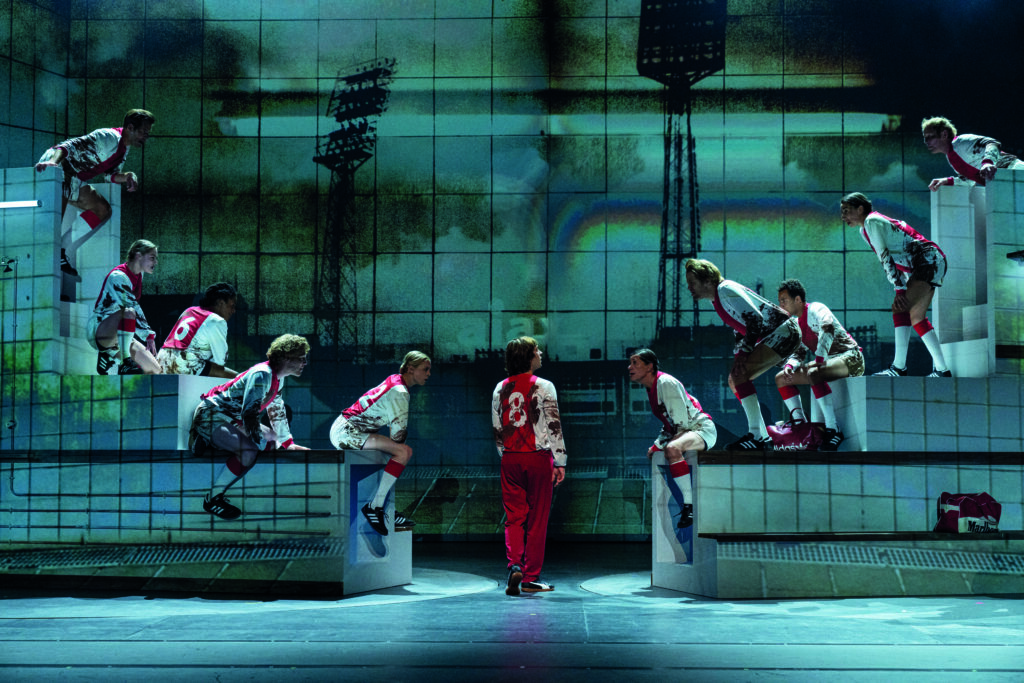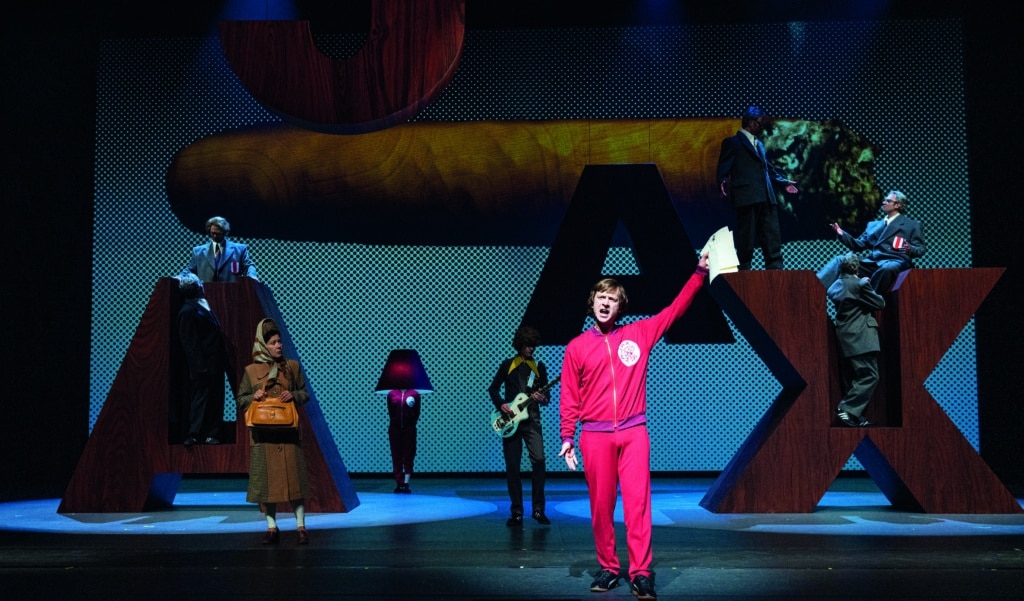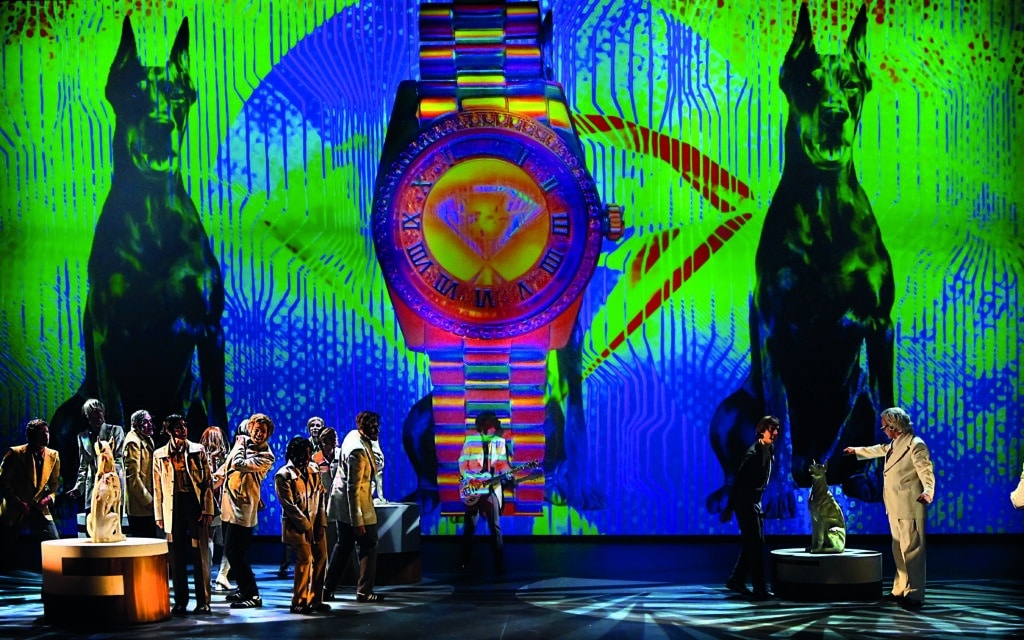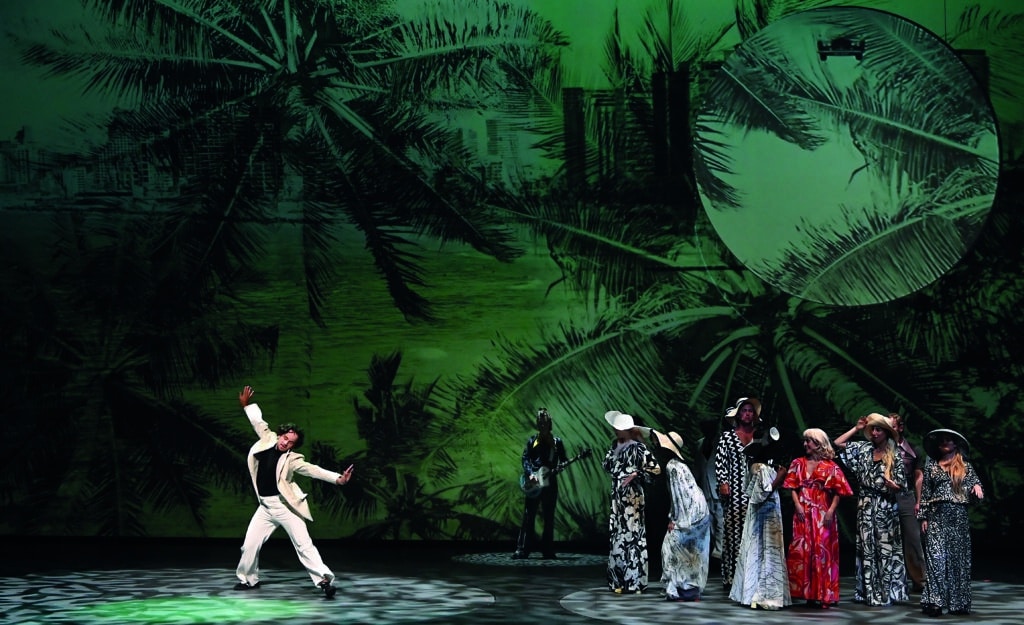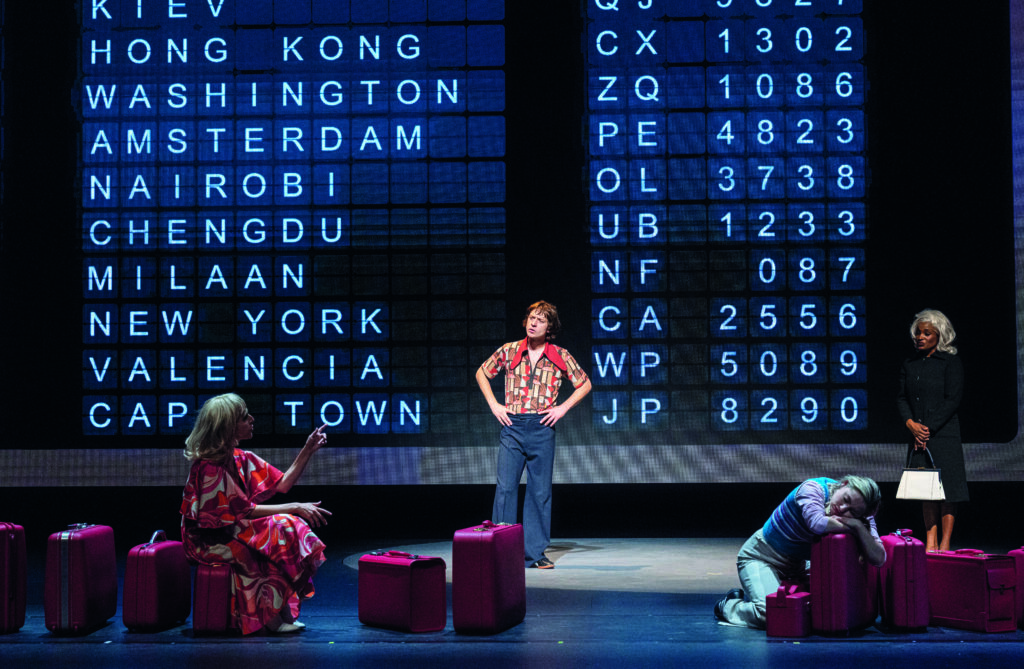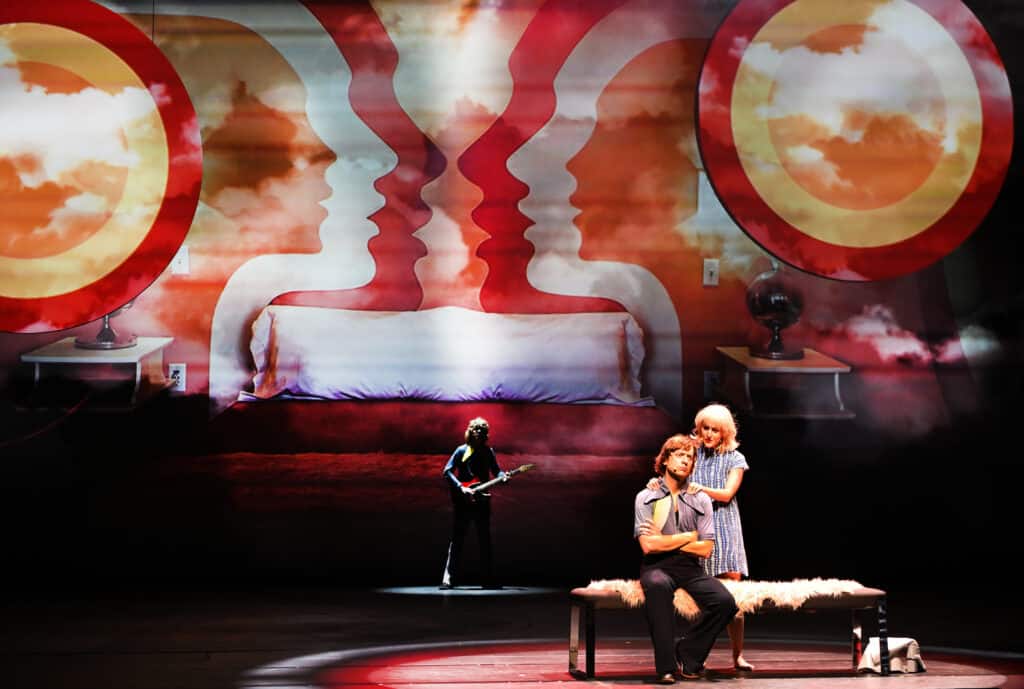14 de Musical
Johan Cruijf
The Netherlands
Lighting Designer: Uri Rapaport
Venue: AFAS Theater Leusden
Product used: Follow-Me 3D SIX + Track-iT
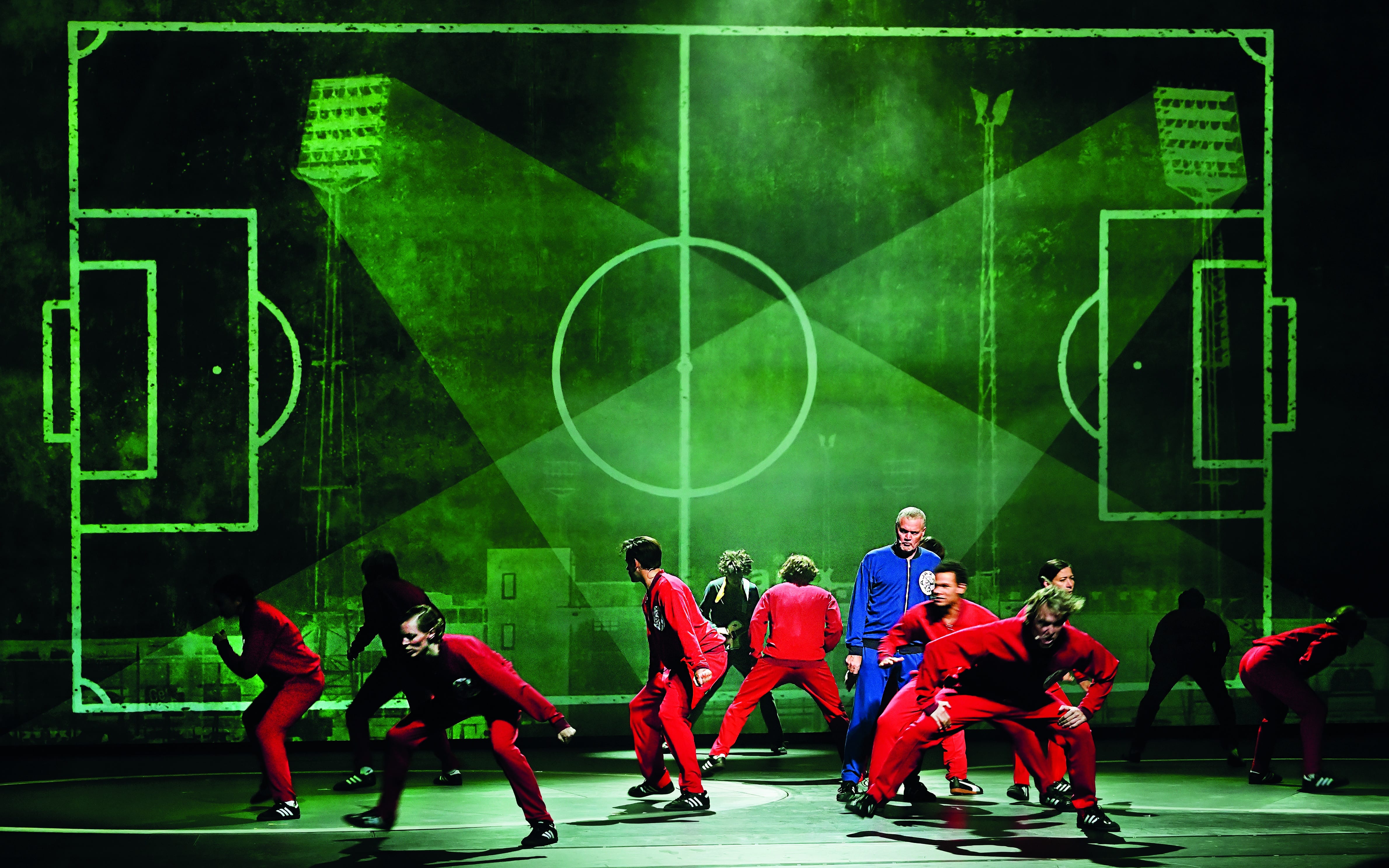
© Michiel Voet & Ben van Duin
Date: October 10, 2023
Uri Rapaport chooses Follow-Me Track-iT for 14 the Musical AFAS Theatre, Leusden, NL
Uri Rapaport is a Dutch lighting designer renowned for his work with both national and international artists and organisations namely in theatre, opera, music and dance performances. To date, Uri has used Follow-Me 3D remote follow-spot system on 6 productions with this latest application being designed originally around the manual system but then upgraded, on the request of the venue, to the Follow-Me Track-iT system: manual and auto tracking within the one scalable system. 14 the musical, the story of Dutch football-legend Johan Cruijff, is currently running in the AFAS Theatre, a purpose built venue in Leusden, Netherlands.
The AFAS Theatre is a unique venue for events which opened its doors in 2021. Co- designed by the owner of the software company AFAS and his brother, a trained architect, this theatre focuses on state-of-the-art, environmentally considerate design and technology. Over day the venue is used to accommodate their own training seminars, conferences, product launches and presentations and at night is currently home to 14 the musical.
A challenge when working in a completely modern built venue is to understand how to create a design that reflects the more traditional atmosphere of a theatrically lit stage performance when using high-tech solutions. Approximately 2500 lighting fixtures are addressed in the venue (including houselights, working, building & stage lights) for both the musical theatre performance at night and the corporate events during the day. All fixtures are enabled for control via the lighting desk – an MA 3 light (running in MA 2 mode for the show) – of these fixtures approximately 56 are run through the Follow-Me show file. None are the conventional fixtures that Uri had first proposed as these did not fit the venues design brief of being environmentally friendly and high-tech. Everything is operated and maintained by three AFAS employed technicians, except the show. The show crew on lights is 2 technicians: one dedicated Follow-Me operator and one lighting board operator, the show is partly cued on show-control and part cued by the Deputy Stage Manager.
The in-house rig was well equipped but due to its daily double usage for corporate events and the theatrical musical, Uri had to be careful with choosing light positions that could be used with appropriate angles for both scenarios; the corporate events that run 9-5 and the evenings musical performances. There was already a lighting rig chosen by the theatrical advisor and Uri had to change a lot to get the equipment he needed to make his design.
After the first year of theatrical and common use there were some further changes: along with the Follow-Me Track-iT System, all rented equipment was bought, the Ayrton Ghiblis and a part of the JB P12 fixtures were changed into Robe Fortes, all the Astera Titans and A3 as well as all video projectors were purchased.
Out of the 56 fixtures in Follow-Me none are actually used as dedicated follow-spots. Uri’s design uses them either for back light, colours, general washes and angles to pick out the performers and highlight their presence on stage, rather than a classical front angled follow-spot light. “The flexibility in Follow-Me to use your fixtures as both follow-spot & positional effects lighting gives a lot of opportunities”. Uri explains further: he can take just one of the fixtures to highlight one of the actors within a general wash that looks very natural. Or, he can follow, with 5 lights from the backlight, or even with a chase of lights: following one of the big set-pieces that’s moving all over the stage without any pre- programmed path, every day this part is moving in a different track.
The attention to detail in building the venue and making it perfect for its daily usage is highlighted on stage. In the middle of the stage a large video wall is installed and used during the day, it can fly in and out. This was also integrated into the setting and design for the musical. On stage there are now 2 revolve stages and a stage track which were recessed into the already built brand new stage, to avoid a (touring) stage deck. This was only done for the musical show under the direction of Tom de Ket. The musicals setting, choreography and lighting design all take advantage of the stage and auditorium area which is also included in the Follow-Me Track-iT performance area.
With 25 anchors located across the performance area (stage & auditorium), Follow-Me Track-iT works in a full 3D environment. With traditional follow-spots it can often be difficult to keep actors well lit when moving vertically in the staging and during live scene changes. In 14 the set is constantly changing, with scenery flying in, being bought in from the wings or rotating on the revolve. The lighting needs to aid the transformation between scenes. For example, the dressing rooms rotate and the players don’t move but they give the allusion of walking. A table is used in numerous positions and viewing angles – to really get control of lighting this well, in whichever scene or position, it has now been given its own tags and treated as a performer in FM Track-iT. Additionally there are a number of scenes choreographed with actors running all over the set. With the auto tracking in play, the 3D environment enables a smooth, accurate continuity in the lighting. Uri confirms that, to his relief, “Follow-Me is very good at this”.
The musical is operated with minimum staff so the upgrade to Follow-Me Track-iT auto tracking system was a smart choice as an add-on to FM 3D SIX the manual system. However working 100% automatically can generate some challenges. Uri commented that “Sometimes new technology brings first the challenge of solving problems in place of “new opportunities””. In the auditorium the tracking, tight against the wall, was tricky to keep constant even with two tags on the actor. Tag placement is an important consideration. The female characters costume design restricted the use of tags in a recommended way (one on each side at waist or shoulder height), instead they are positioned front and back so when entering by the wall her tags are not both capable of having an uninterrupted line of sight with the Track-iT anchors. This is where a unique advantage of Follow-Me Track-iT came in to play: manual and auto tracking in the one system. When entrancing in the auditorium along the side of the wall, the character was briefly manually tracked before switching seamlessly to auto tracking when reaching the stage. Originally only 2 key performers were going to wear tags – now Uri has added all 14 performers and insured with the wardrobe department, that they have 2 well positioned tags each, so can be well tracked through-out the entire performance area.
Talking about how to create a lighting design when using either manual or auto tracking Uri confirms “it is a different way of thinking”. Unlike his first design when using the Follow-Me 3D manual system only, he now (with Follow-Me Track-iT) uses a lot of backlight and colour changes to depict the characters in each scene. If a character is being tracked with 12 spots then he is also looking at the light angle and changing which fixtures are following all the time to keep the continuity and light on the character.
A point that Uri and Follow-Me Technical Director, Erik Berends, are considering how to further perfect, are the challenging moments in the show. The main character has quite a spontaneous acting skill where he is jumping from stage to auditorium and back, changing direction quickly and erratically. These movements cannot be learnt nor totally predicted as every evening both speed and direction are chaotically different; a challenge for any traditional follow-spot operator, tracking system or light fixture to keep up with.
Pushing himself and the technology to respond fluently to the actor, Uri has included prediction via the lighting desk and makes use of the static and dynamic tracking in Follow- Me. He has achieved a good solution for these scenes however he admits that he still finds it a little frustrating that the actor can (and often deliberately tries to) “be ahead of the light” for a split second. Uri however has 100% understanding of why this is and confirms that he “does not feel let down by any of the equipment” he is using. Uri surmises that yes he believes “this responsiveness will come, maybe it is a case of more prediction but with future developments of all hardware (fixtures, Follow-Me System & lighting desk) with faster software / firmware or even the implementation of AI these type of imperfections will be solved”.
The show has a total of 800 lighting cues with about 300 being for the subtile constant changes of fixtures and prediction that are happening within the Follow-Me System. This enables Uri to paint the picture exactly how he wants the audience to experience the show – the lighting supports the script, dancing and story telling as it moves around the theatre.
Another establish lighting designer watching the show, compliment Uri on the design and implementation of it, citing, in particular “the great skills of the Follow-Me operators”.
Knowing now the programming ways and differences open to a designer when working with remote follow-spotting or auto tracking, if Uri where to start completely fresh with designing this musical production he would approach it differently. Adding tags to the full cast from the beginning and treating each individually might be his first step. Follow-Me Track-iT shines for him, Uri said “I love it as it is so easy with the dancing parts” but he also confesses to wanting more tags so that the entire cast could be individually tracked throughout, hence the addition he implemented to include all 14 performers. He now believes the impact of the dancing numbers are even more spectacular for the audience to enjoy. This was possible as the Follow-Me Track-iT System has unlimited scalability in both the number of performers you wish to track as well as the size of the trackable performance area.
For the initial design with the Follow-Me 3D SIX System, Uri incorporated a number of fixtures as top, downlighting, this worked great for achieving the look he wanted, however when using these same fixtures with auto-tracking he quickly realised the fixtures often had to flip mid state so even when applying Flip Control, the “fade & flip” feature in Follow-Me, this distracted from the picture he was creating. By making the angles bigger and less straight down he was able to stop this happening however for redesigning with Follow-Me Track-iT he also selected more fixtures for back lighting rather than top. Uri confirms that “working with a tracking system does require a different approach to design”. However it also “aids great effects and ways in which the fixtures can be used to great effect such as tracking while opening up a beam and even adding soft focus gobos during the tracking movement. A pretty unique effect that is not possible with a traditional follow-spot”.
Manual and Auto tracking systems are progressing fast. For future designs that may include Follow-Me, Uri would certainly make his design to incorporate Follow-Me features. He noted that during the 6 months between the initial design and then the implementation with Follow-Me Track-iT “opportunities arose that I didn’t expect… in addition a new software update happened with even more opportunities and possibilities”. Learning how to take his expansive knowledge of lighting design and apply it with modern technology is a great learning opportunity. Whilst programming 14 he noted a few traditional approaches to design that he had to up date to the more modern methods and programming approaches: for example if an actor is moving from left to right and crosses the path of an actor in the opposite direction, with traditional FOH spots you may continue using the same follow-spot or swap half way, depending on the throw length. However when using a selection of movers in your rig you can add or remove certain angles and use features such as continuous beam size to maintain the look and feel of the light on the moving actor.
With this newly gained experience Uri is now aware as a designer that “parts of the system work different to classic design”. He is actually finding using the manual aspect of Follow- Me easy to work with and takes full advantage of features like prediction, merging those into the lighting board. Letting go of traditional methods of approaching his design he is able to build new work flows with the modern technology to enable him to still create beautiful designs, maintaining the traditional subtitles that make a theatre lighting design outstanding.
Credits:
Lighting Designer: Uri Rapaport :https://rapaport.home.xs4all.nl/ rapatech_lichtontwerp_uri_rapaport/home.html
Venue: AFAS Theatre: https://www.afastheater.nl Photography: © Michiel Voet & Ben van Duin
Follow-Me Equipment
Original FM 3D SIX System rental: Ampco Flashlight, Netherlands Full FM 3D SIX with Track-iT System: Venue purchase in Netherlands
Follow-Me Track-iT System: 24 Anchor set up
30 Tag / 14 performer system

